
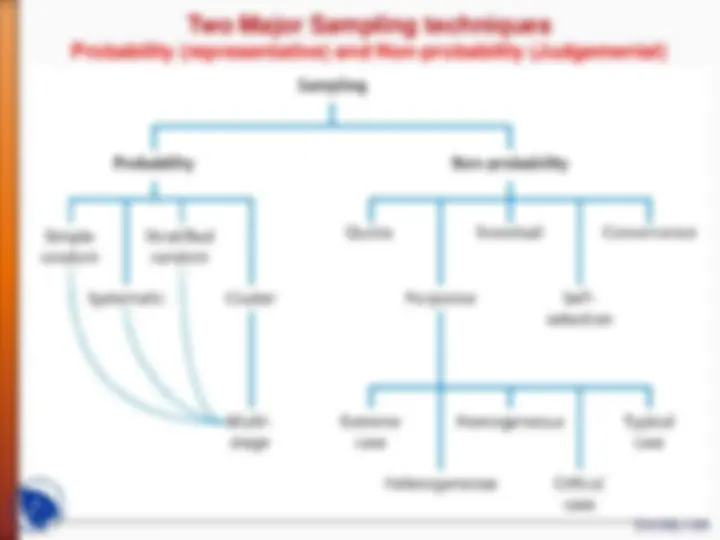
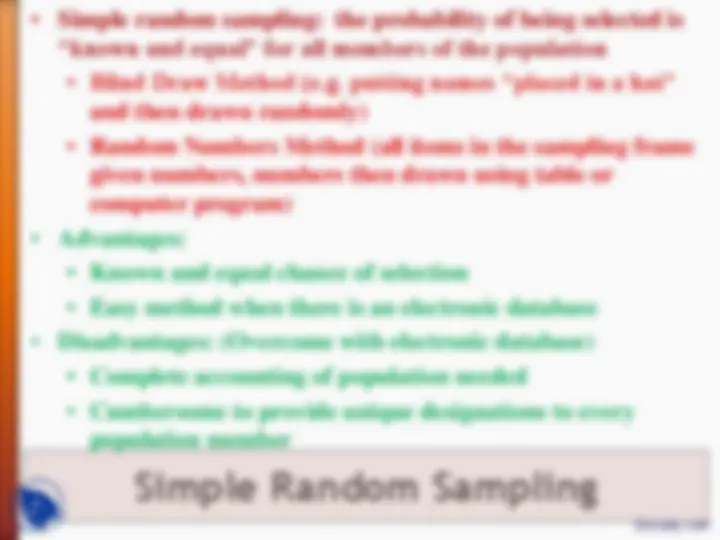
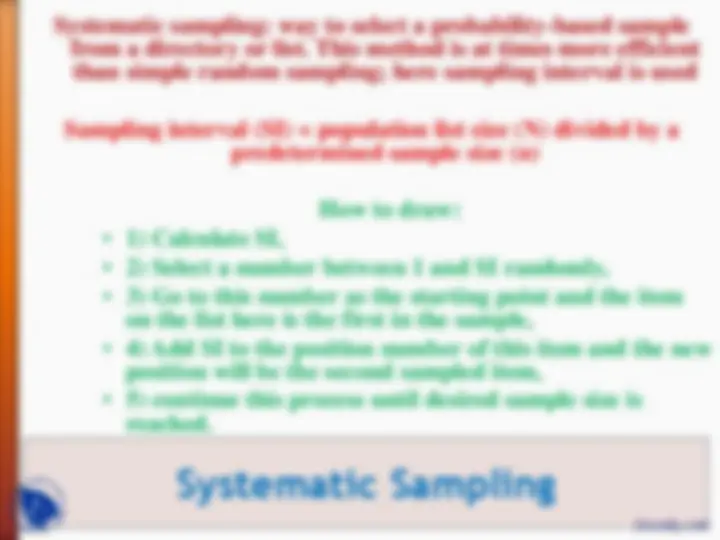
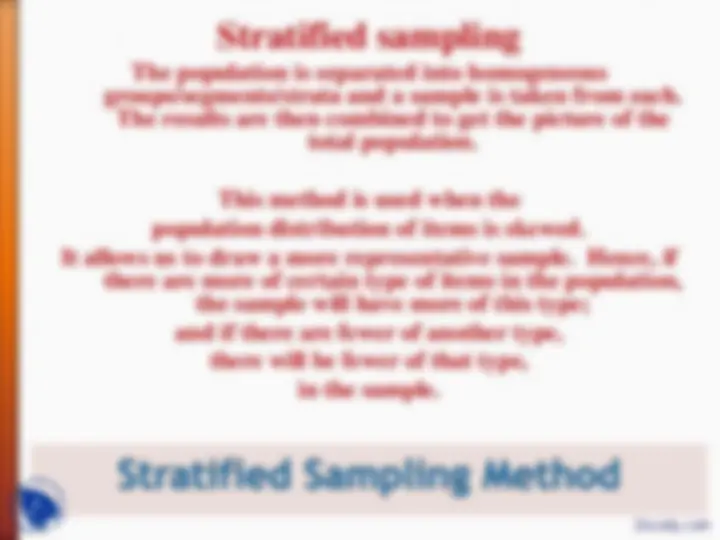
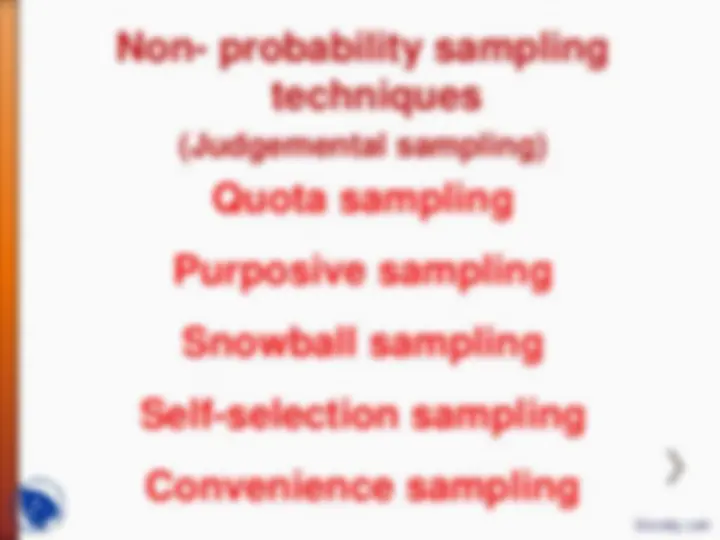
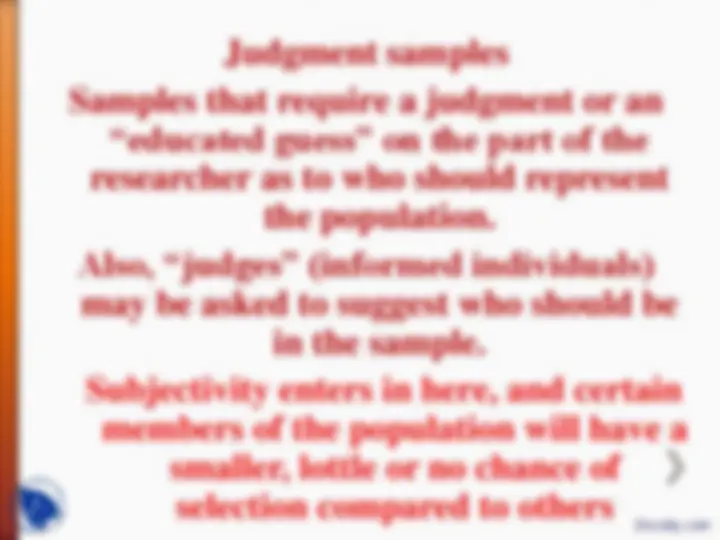
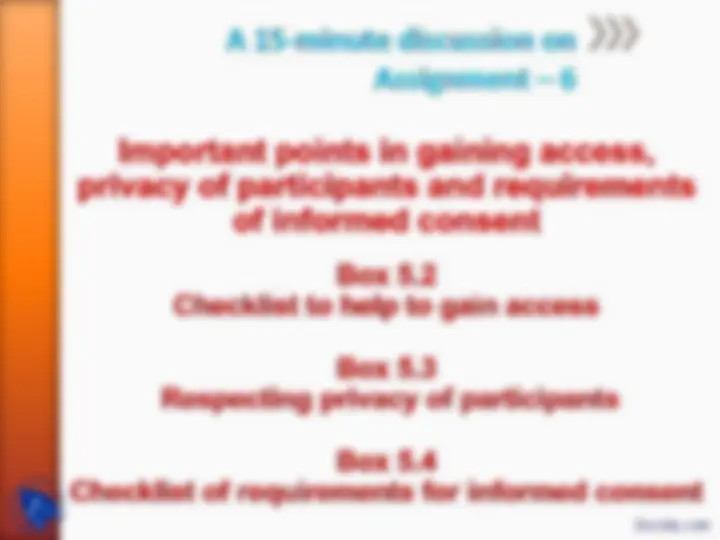

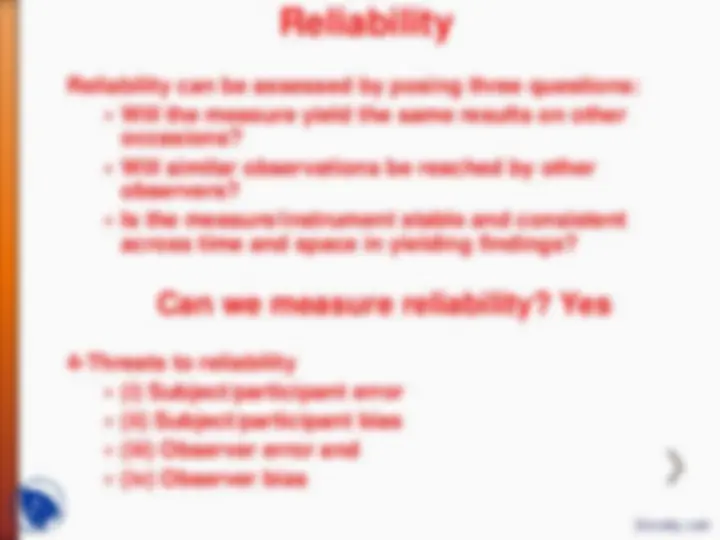

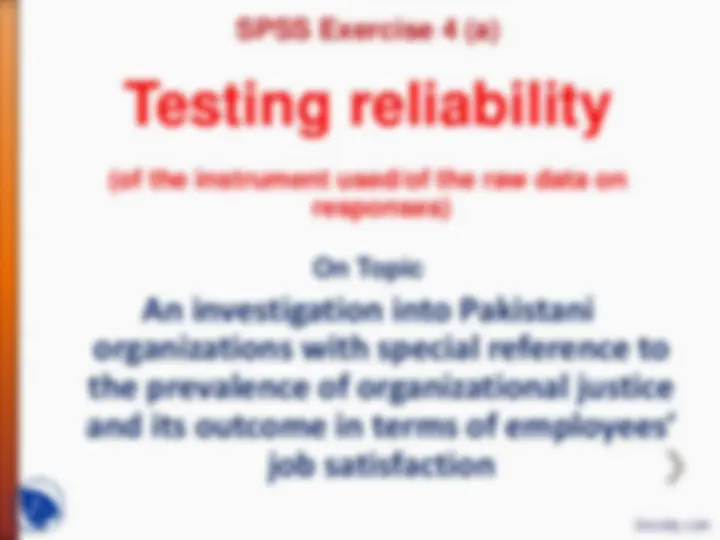
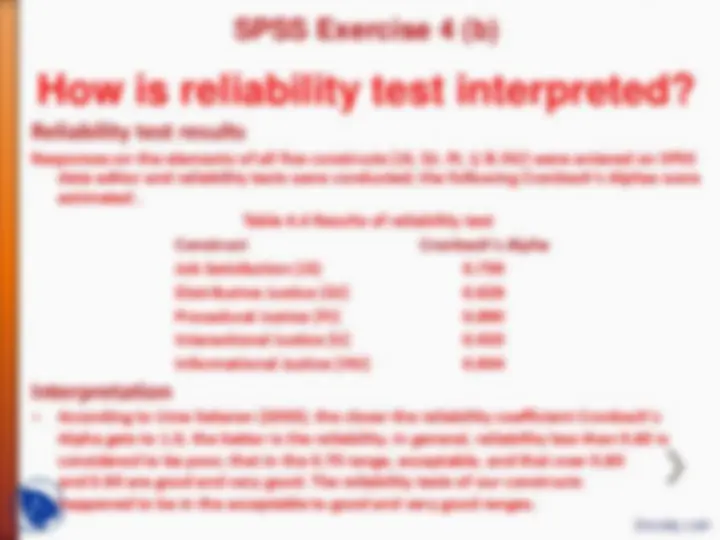


Study with the several resources on Docsity

Earn points by helping other students or get them with a premium plan


Prepare for your exams
Study with the several resources on Docsity

Earn points to download
Earn points by helping other students or get them with a premium plan
Community
Ask the community for help and clear up your study doubts
Discover the best universities in your country according to Docsity users
Free resources
Download our free guides on studying techniques, anxiety management strategies, and thesis advice from Docsity tutors
This lecture was delivered by Dr. Radha Ram at Anand Agricultural University for Advanced Research Methods subject. Its main points are: Regular, Writing, Place, Key, Differences, Academic, Consultancy, Management, Report, Consultancy, Suggested, Structure
Typology: Slides
1 / 20

This page cannot be seen from the preview
Don't miss anything!













Simple Random Sampling
“known and equal” for all members of the population
Systematic Sampling
Systematic sampling: way to select a probability-based sample from a directory or list. This method is at times more efficient than simple random sampling; here sampling interval is used
Sampling interval (SI) = population list size (N) divided by a predetermined sample size (n)
How to draw:
Cluster Sampling – Area Method
Stratified sampling The population is separated into homogeneous groups/segments/strata and a sample is taken from each. The results are then combined to get the picture of the total population.
This method is used when the population distribution of items is skewed.
It allows us to draw a more representative sample. Hence, if there are more of certain type of items in the population, the sample will have more of this type; and if there are fewer of another type, there will be fewer of that type, in the sample.
Judgment samples
Samples that require a judgment or an
“educated guess” on the part of the
researcher as to who should represent
the population.
Also, “judges” (informed individuals)
may be asked to suggest who should be
in the sample.
Subjectivity enters in here, and certain
members of the population will have a
smaller, lottle or no chance of
selection compared to others
Referral and Quota Sampling Methods
Credibility of Research Findings
Important considerations
Reliability?
Validity?
Generalizability?
Validity
Whether the findings are really about
what they appear to be about.
Validity depends upon:
Generalizability
The extent to which research results
are generalizable.
Logic leaps and false
assumptions
Research design is based on a flow
of logic
and number of assumptions,
which must stand to closest scrutiny
How is reliability test interpreted?
Reliability test results
Responses on the elements of all five constructs (JS, DJ, PJ, Ij & INJ) were entered on SPSS data editor and reliability tests were conducted; the following Cronbach’s Alphas were estimated. Table 4.4 Results of reliability test Construct Cronbach’s Alpha Job Satisfaction (JS) 0. Distributive Justice (DJ) 0. Procedural Justice (PJ) 0. Interactional Justice (IJ) 0. Informational Justice (INJ) 0.
Interpretation » According to Uma Sekaran (2003), the closer the reliability coefficient Cronbach’s Alpha gets to 1.0, the better is the reliability. In general, reliability less than 0.60 is considered to be poor, that in the 0.70 range, acceptable, and that over 0. and 0.90 are good and very good. The reliability tests of our constructs happened to be in the acceptable to good and very good ranges.